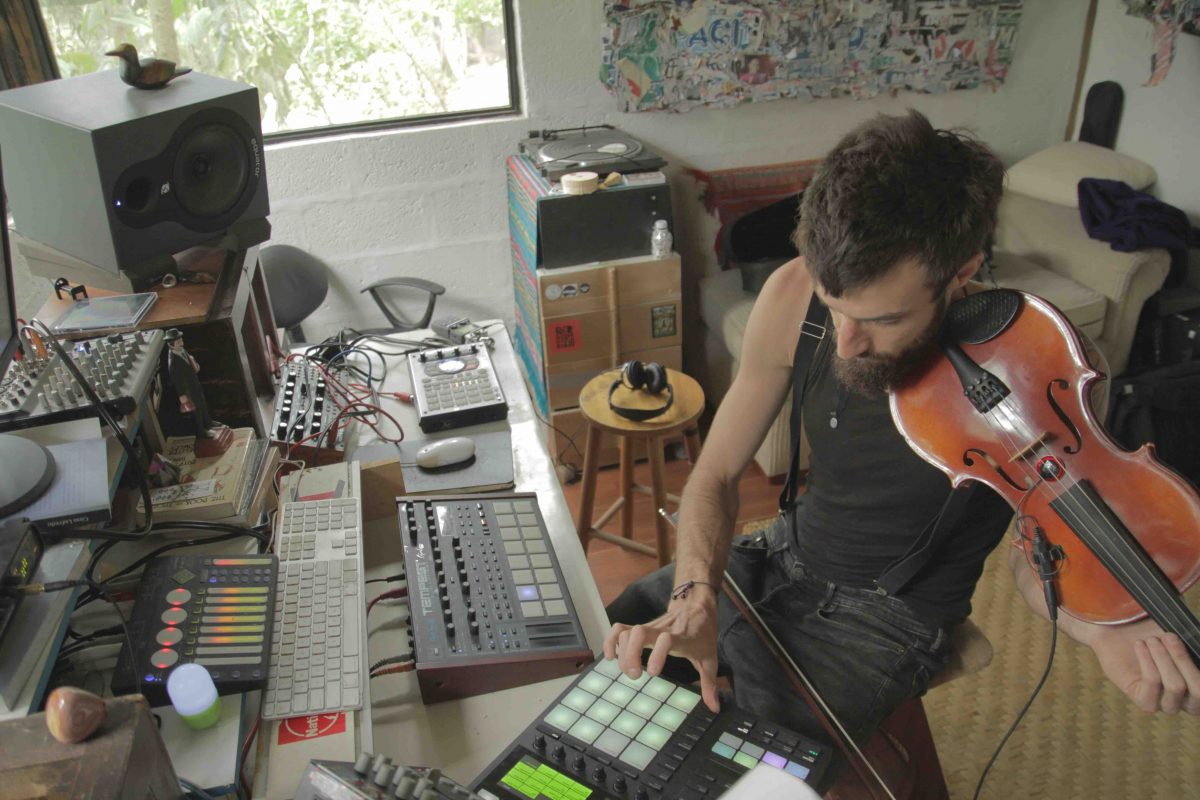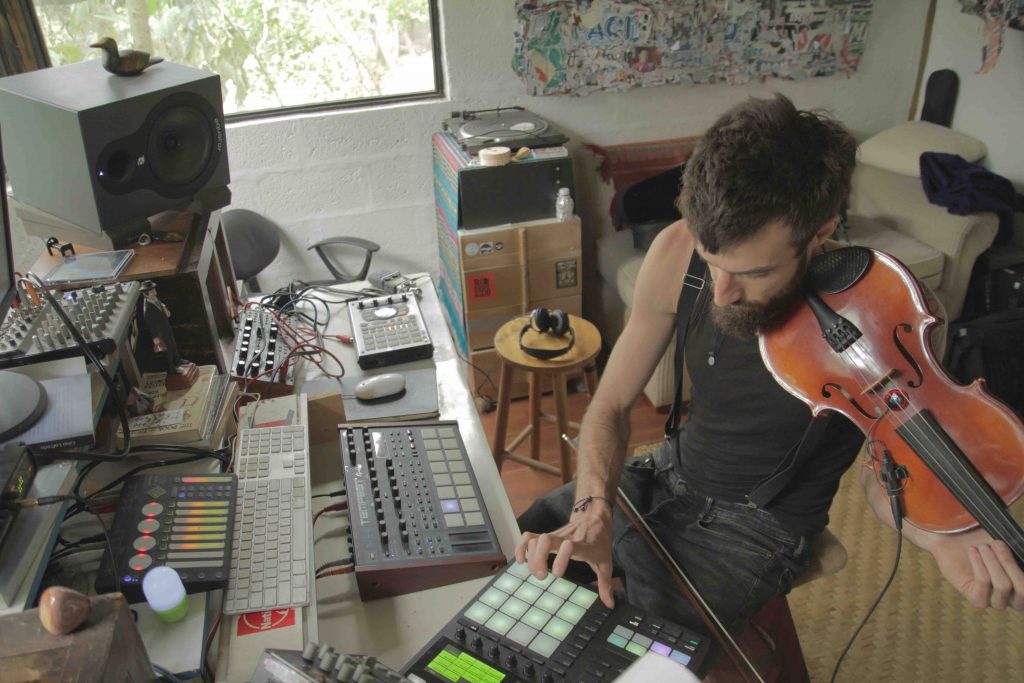Native Instruments’ latest documentary project takes a deep dive into Ecuador’s thriving electronic music community. In their own words, Misho Taky: Tradition Meets Innovation in Ecuador explores “cultural preservation through innovative use of technology,” centering on producers Quixosis, Malafama, and EVHA. Each artist represents specific perspectives in the bubbling scene, which has seen its own renaissance since 2014, as artists are walking the line between anthropology and cultural production.
Quixosis is a Quiteño producer known for his downtempo, gliding renderings, which often sample the source material of his grandfather Carlos Rota’s Caife record label, founded in the 1950s. After finding a collection of almost perfectly preserved magnetic reel-to-reel master tapes of Caife’s discography while clearing out his grandfather’s house, Quixosis was opened to the opportunity of preserving an archival space for “música nacional,” including sanjuanito, albazo, pasillo, pasacalle, yaraví, and beyond. As he describes it in the documentary, the label and his own work is a reflection of “Ecuador being surrounded by, and formed by, diversity.” It’s also a continuation of the label’s original intention of “giving space to música indígena y mestiza and spreading the music wide.”
ZZK-affiliated band EVHA are also featured, offering a Quito-based amalgamation of the Sierra, Costa, and Oriente of the country, and the vastness of sounds included in those regions through an indie rock-pop lens. EVHA’s sound centers on incorporation of Afro-Ecuadorian percussion specific to the Valle del Chota known as bomba del Chota, and the documentary goes to on feature Los Marabú, a group continuing this tradition in the region. EVHA has also collaborated with Native Instruments in the past to develop a plug-in that emulates these sounds, culminating in what they describe as “bomba cósmica.” “We had to do something that truly represents us,” member Renata Nieto says.
The documentary also explores the work of Malafama, a producer based in Ibarra, whose ambient, spacious productions are a reflection of his intimate connection with his local Kichwa community in the province of Cotacachi. While this basis of production lays the foundation for Malafama’s sometimes wildly experimental tracks, his practice is always grounded in educating listeners on what he describes as “the traditional side that’s being lost.” The documentary goes on to shine a light on the various sides of his cultural production, whether it’s producing a tongue-in-cheek Huesofest: Make Ibarra Great Again showcase, or his studio sessions recording local musician Jesús Bonilla.
Misho Taky was directed by Colombian filmmaker Luis Antonio Delgado, who also joined Native Instruments in previous documentaries. Past editions have thoroughly documented Colombia’s Caribbean coast and picó soundsystem community in ¡SABROSO!, as well as Perú’s chicha tradition through Los Wembler’s de Iquitos, Dengue Dengue Dengue, and the Terror Negro label crew in Tropical Frequencies.
Misho Taky is a contribution toward challenging the branding of “Andean music,” as it does not serve to highlight the multiplicity of genres, and the subtleties between them, swept into the term. As Ecuador gains more attention from international music journalists and record labels, projects like Misho Taky offer the opportunity to center artists’ perspectives and allow them to tell the intricacies of their own stories, celebrating the nuances of the immense diversity inherent to Ecuador.
Watch our premiere of Misho Taky below:




